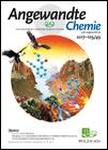版权所有:内蒙古大学图书馆 技术提供:维普资讯• 智图
内蒙古自治区呼和浩特市赛罕区大学西街235号 邮编: 010021

作者机构:Key Laboratory of Biomass Chemical Engineering of Ministry of Education College of Chemical and Biological Engineering Zhejiang University Hangzhou 310027 China CAS Key Laboratory of Design and Assembly of Functional Nanostructures Fujian Provincial Key Laboratory of Nanomaterials Fujian Institute of Research on the Structure of Matter Chinese Academy of Sciences Fuzhou Fujian 350002 China Australian Carbon Materials Centre (A-CMC) School of Chemical Engineering University of New South Wales Sydney NSW 2052 Australia Institute of Zhejiang University–Quzhou Quzhou 324000 China
出 版 物:《Angewandte Chemie》 (应用化学)
年 卷 期:2021年第133卷第16期
页 面:9160-9167页
学科分类:081704[工学-应用化学] 08[工学] 0817[工学-化学工程与技术]
主 题:Fe-N2O4 inverse opal structure kinetic enhanced catalysis N2 electroreduction single atom catalyst
摘 要:Electrocatalytic nitrogen reduction reaction (NRR) plays a vital role for next-generation electrochemical energy conversion technologies. However, the NRR kinetics is still limited by the sluggish hydrogenation process on noble-metal-free electrocatalyst. Herein, we report the rational design and synthesis of a hybrid catalyst with atomic iron sites anchored on a N,O-doped porous carbon (Fe SA -NO-C) matrix of an inverse opal structure, leading to a remarkably high NH 3 yield rate of 31.9 μg h −1 mg −1 cat. and Faradaic efficiency of 11.8 % at −0.4 V for NRR electrocatalysis, outperformed almost all previously reported atomically dispersed metal-nitrogen-carbon catalysts. Theoretical calculations revealed that the observed high NRR catalytic activity for the Fe SA -NO-C catalyst stemmed mainly from the optimized charge-transfer between the adjacent O and Fe atoms homogenously distributed on the porous carbon support, which could not only significantly facilitate the transportation of N 2 and ions but also effectively decrease the binding energy between the isolated Fe atom and *N 2 intermediate and the thermodynamic Gibbs free energy of the rate-determining step (*N 2 → *NNH).